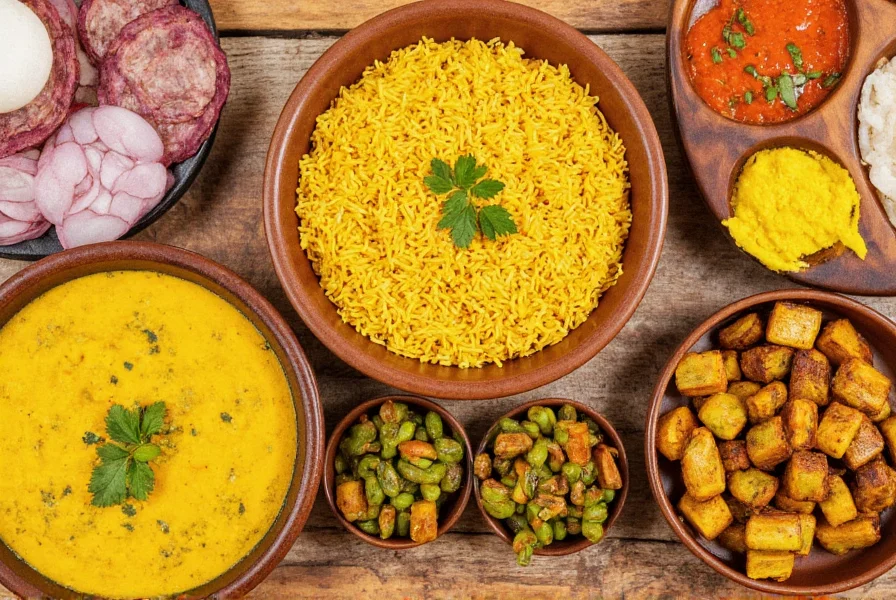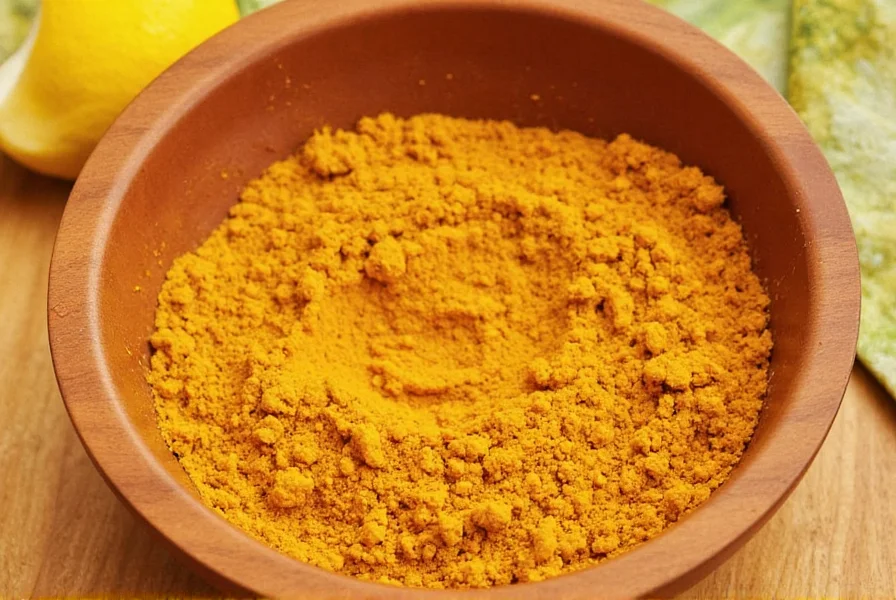Known as the golden spice, turmeric has been enhancing dishes for thousands of years across Asian and Middle Eastern cuisines. This vibrant rhizome offers more than just color—it brings a warm, slightly bitter flavor that complements both savory and sweet preparations. Understanding how to properly incorporate turmeric into your cooking unlocks its full potential while maximizing its well-documented health benefits.
The Science Behind Cooking with Turmeric
Turmeric contains curcumin, its active compound responsible for both its yellow hue and health properties. Curcumin is fat-soluble and poorly absorbed on its own. When you cook with turmeric, certain techniques significantly enhance its bioavailability:
- Fat pairing: Combine turmeric with healthy fats like coconut oil, olive oil, or ghee
- Heat activation: Gentle heating (not boiling) releases more curcumin
- Black pepper addition: Piperine in black pepper increases absorption by up to 2000%
- Avoid alkaline environments: Baking soda or other alkaline ingredients can degrade curcumin
These principles form the foundation of effective turmeric cooking techniques that maximize both flavor and nutritional benefits.
Ground Turmeric vs. Fresh Turmeric: What to Use When
Understanding the differences between ground and fresh turmeric helps you make better cooking decisions:
| Characteristic | Ground Turmeric | Fresh Turmeric |
|---|---|---|
| Flavor Profile | Earthy, slightly bitter | Fresher, more citrusy with ginger notes |
| Best Used In | Dry rubs, spice blends, long-cooked dishes | Quick-cooked dishes, juices, raw preparations |
| Conversion Ratio | 1 teaspoon ground = 1 inch fresh | 1 inch fresh = 1 teaspoon ground |
| Storage | 6-12 months in airtight container | 2-3 weeks refrigerated, or frozen |
For how to use fresh turmeric in cooking, peel the rhizome with a spoon (like ginger), then grate, slice, or juice it. Fresh turmeric works beautifully in salad dressings, smoothies, and quick sautés where its brighter flavor can shine.
Essential Techniques for Cooking with Turmeric
Master these fundamental techniques to get the most from turmeric in your kitchen:
1. The Blooming Method
Heat 1-2 teaspoons of oil in a pan over medium heat. Add 1 teaspoon turmeric and stir constantly for 30-60 seconds until the spice becomes fragrant. This "blooms" the turmeric, releasing its essential oils and deepening its flavor. Immediately add other spices or liquid to stop the cooking process. This technique is essential for best recipes with turmeric for beginners as it prevents bitterness.
2. The Golden Milk Technique
For beverages and sauces, combine turmeric with a fat source and black pepper first. A basic golden milk ratio is 1 cup liquid (milk or plant-based alternative), ¼ teaspoon turmeric, a pinch of black pepper, and 1 teaspoon healthy fat. Heat gently without boiling to preserve curcumin content. This method creates the foundation for healthy turmeric recipes for inflammation.
3. Stain Prevention Strategies
Turmeric's vibrant color can stain surfaces and fabrics. When how to prevent turmeric stains while cooking, follow these tips:
- Use glass or stainless steel bowls instead of plastic
- Wear an apron and use disposable gloves
- Clean spills immediately with lemon juice or vinegar
- Apply coconut oil to your hands before handling to create a barrier
- Use dedicated cutting boards for turmeric
Perfect Pairings: What Flavors Complement Turmeric
Understanding turmeric spice pairing guide principles helps create balanced dishes. Turmeric works exceptionally well with:
- Acidic elements: Lemon, lime, or vinegar brighten turmeric's earthiness
- Warm spices: Cumin, coriander, and cardamom create complex flavor profiles
- Sweet components: Coconut milk, sweet potatoes, or a touch of honey balance bitterness
- Aromatic vegetables: Onions, garlic, and ginger form the flavor base for many turmeric dishes
For Western palates exploring cooking with turmeric and black pepper benefits, try adding turmeric to scrambled eggs, roasted cauliflower, or even butternut squash soup. The key is starting with small amounts and gradually increasing as your taste adjusts.
Common Mistakes to Avoid
Even experienced cooks make these turmeric errors:
- Adding turmeric too late: It needs time to mellow—add early in the cooking process
- Using excessive amounts: More than 1 teaspoon per serving often creates bitterness
- Skipping the fat component: Without fat, you're missing out on both flavor and health benefits
- Boiling turmeric in water: High heat in water degrades curcumin significantly
- Not pairing with black pepper: You're getting only a fraction of potential health benefits
Simple Turmeric Recipes to Try Today
Golden Turmeric Rice
Toast 1 teaspoon turmeric in 1 tablespoon coconut oil for 30 seconds. Add 1 cup rinsed basmati rice and stir to coat. Add 1¾ cups water, a pinch of black pepper, and 1 teaspoon lemon juice. Bring to a boil, then simmer covered for 15 minutes. Let rest 5 minutes before fluffing. This demonstrates perfect when to add turmeric in cooking process for rice dishes.
Turmeric Roasted Vegetables
Toss 2 cups chopped vegetables (cauliflower, sweet potato, carrots) with 1½ tablespoons olive oil, ¼ teaspoon turmeric, ¼ teaspoon cumin, pinch of black pepper, and salt. Roast at 400°F (200°C) for 25-30 minutes until tender. The high heat caramelizes the turmeric beautifully without degrading its properties.

Storing Turmeric Properly
Maximize shelf life with these storage tips:
- Keep ground turmeric in an airtight container away from light and heat
- Store fresh turmeric rhizomes in the refrigerator for 2-3 weeks
- Freeze fresh turmeric in a sealed bag for up to 6 months
- Add a silica packet to your spice container to prevent clumping
- Buy whole turmeric root and grind as needed for maximum freshness
Ground turmeric loses potency over time—replace every 6-12 months for best flavor and benefits. Fresh turmeric shows degradation when it becomes soft or develops mold.
Final Thoughts on Cooking with Turmeric
Mastering how to cook with turmeric transforms ordinary dishes into vibrant, health-supportive meals. By understanding the science behind its properties, using proper techniques, and avoiding common mistakes, you'll unlock turmeric's full potential in your kitchen. Remember that less is often more with this powerful spice—start with small amounts and adjust to your taste preferences. Whether you're creating traditional curries or experimenting with modern fusion dishes, turmeric offers endless possibilities for creative, flavorful cooking that also supports wellness.











 浙公网安备
33010002000092号
浙公网安备
33010002000092号 浙B2-20120091-4
浙B2-20120091-4